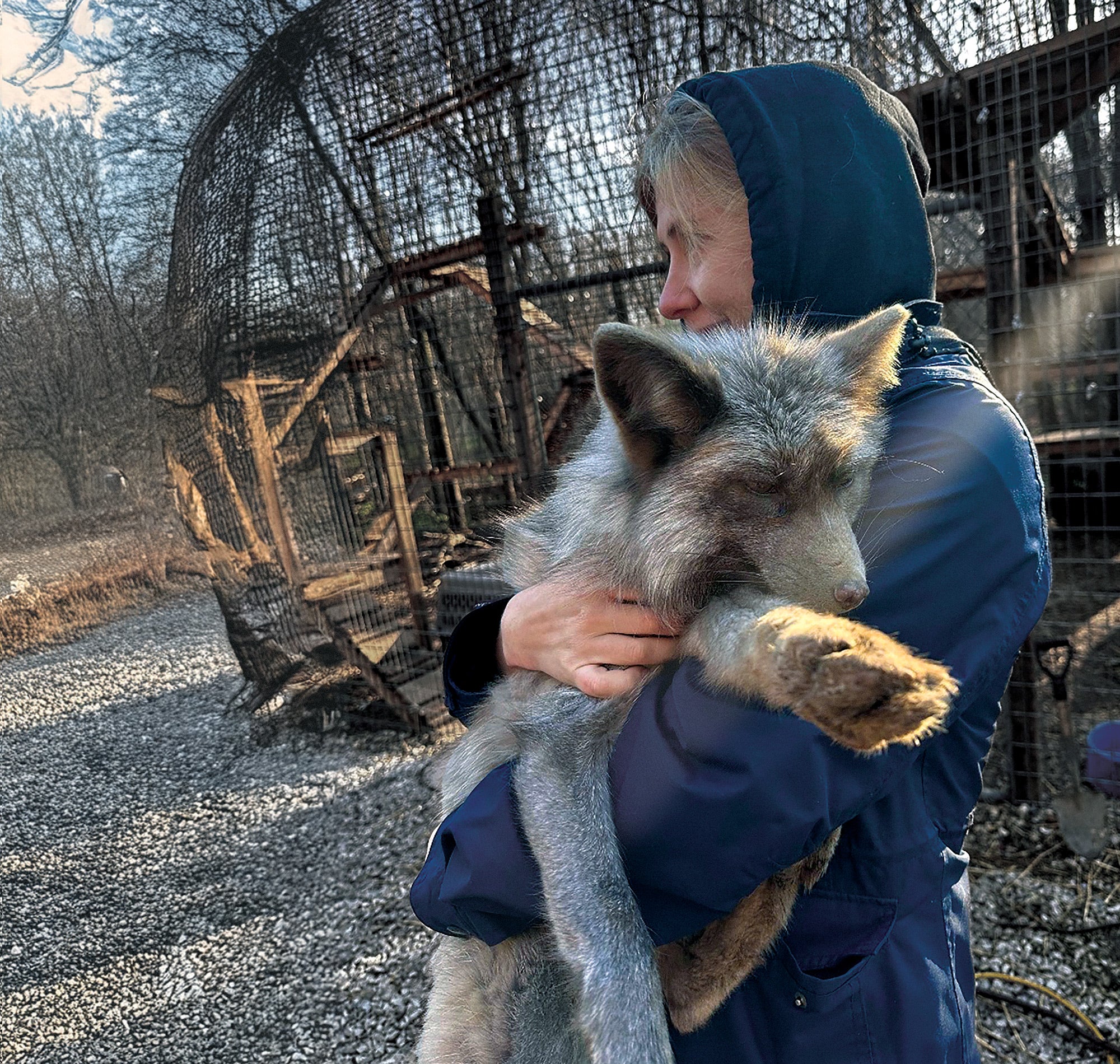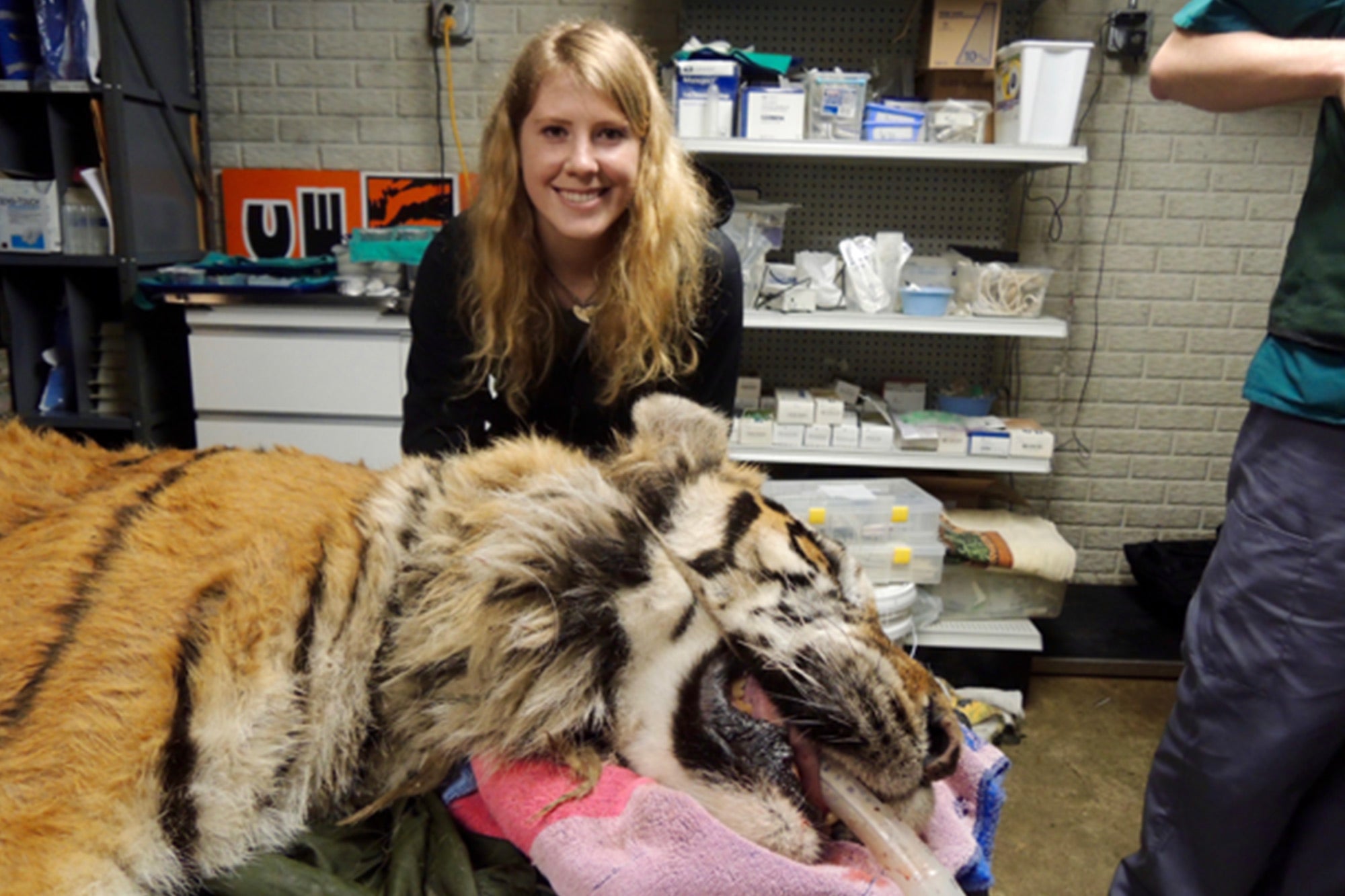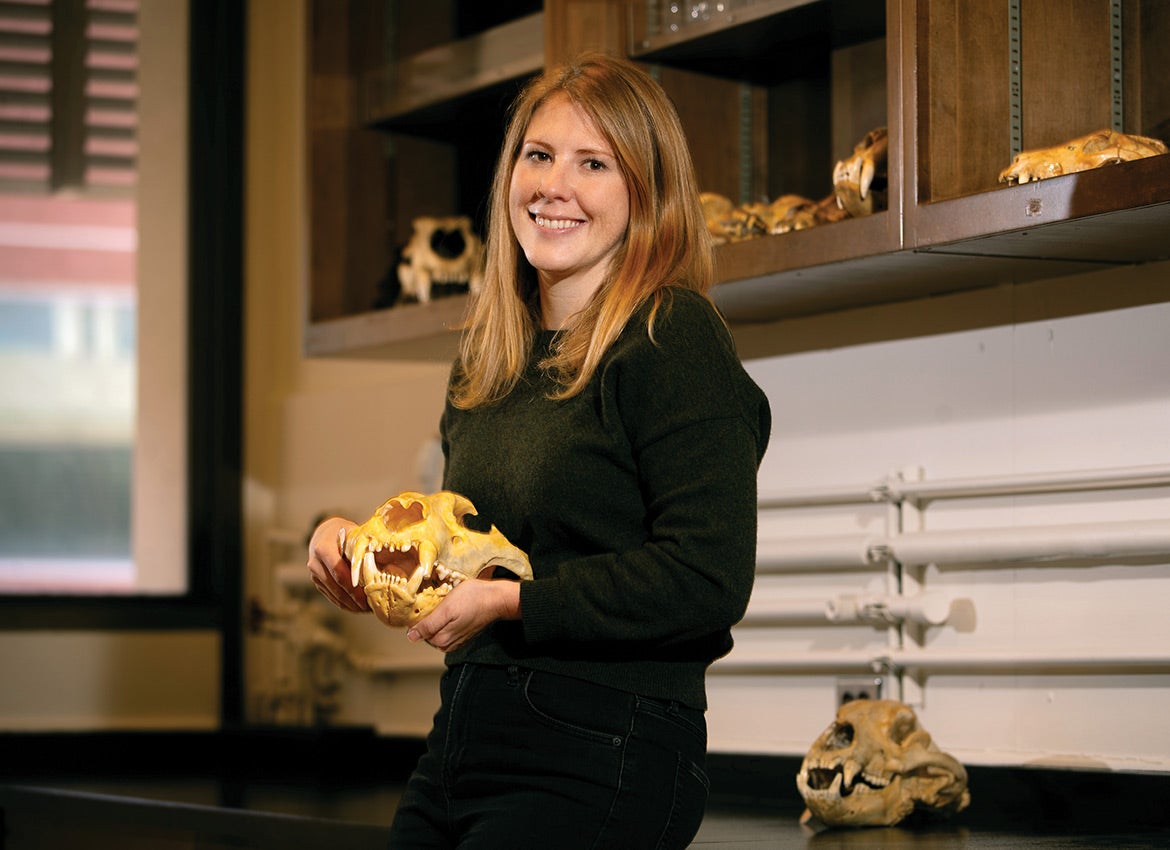At the Heart of Conservation
Biologist Ellie Armstrong uses DNA — and dog photography — to save animals on the brink
By Jules Bernstein
E llie Armstrong is a scientist by training, a dog photographer by hobby, and a rescuer by nature. By day, she is an evolutionary biologist at UC Riverside building genomic tools to trace the ancestry of species facing extinction. In her free time, she takes glamour shots of foster dogs to help them get adopted. Both activities are motivated by a similar impulse.
“I want to help creatures that other people might overlook or write off,” she said.
That impulse stems from a childhood shaped by nature, imagination, and grandparents who encouraged both. Raised partly in the woods of Colorado and partly on wildlife shows on “Animal Planet,” she never imagined that her future would involve assembling the entire genome of a tiger — or that such work could be complemented by helping a dog find a forever home.
Armstrong joined UCR in 2024 as an assistant professor in the Department of Evolution, Ecology, and Organismal Biology. Her lab’s goal is simple: understand where wild animals come from and use that information to protect where they’re going.
More specifically, Armstrong uses genome sequencing to study the evolutionary history, health, and population dynamics of wild and endangered species. Her team collaborates with groups like the U.S. Fish and Wildlife Service to build genetic databases for animals that are often trafficked or abused, or are slipping into extinction.
Armstrong has worked on a variety of animals including grizzly bears, Channel Island foxes, and African wild dogs. But it was a project involving captive tigers that brought the complexity of her research — and its emotional stakes — into the public eye, with high-profile articles about her work, including a feature in The New York Times.

Years before “Tiger King” introduced the public to exotic backyard zoos and big cat breeders, Armstrong had already formed a partnership with the nonprofit Tigers in America. The organization helps relocate tigers from abusive or unlicensed facilities to true sanctuaries, and Armstrong saw an opportunity to bring science into the mix.
“I wanted to know what these cats really were,” she said. “There were all these rumors about inbreeding, or that they were useless for conservation. I thought, ‘Let’s test it. Let’s look at the genomes.’”
Her findings revealed a far more nuanced picture, one that challenged assumptions and offered hope. Many believed that captive tigers in the U.S. — often seized from roadside zoos or private collections — were too inbred, genetically compromised, or mixed-breed to be useful for conservation. Armstrong’s genomic analyses told a different story: while some animals showed signs of inbreeding, others had surprising levels of genetic diversity. That discovery raised the possibility that, with better tracking and management, some rescued cats could contribute to broader species preservation efforts or, at the very least, help scientists understand tiger genetics in new ways.
This work isn’t easy. Tigers are symbolic for a lot of people. They’re emotional lightning rods.
“People get very attached to big cats — even scientists,” Armstrong said, noting that this emotional complexity is part of what drives her. “These animals are more than data points. Their stories matter. Their survival matters.”

Armstrong’s own story is filled with pivots and persistence. She worked full time during college, almost went into musical theater, and briefly dropped out before returning to finish a degree in molecular and environmental biology at UC Berkeley. A turning point came when her advisor, arachnologist Rosemary Gillespie, offered her a paid position in a genetics lab, a job that later took her to Hawaii to study spiders.
“I had just taken a genetics course and had a knack for it,” Armstrong said. “Suddenly I was in the field, working on real problems, and realizing I could do this.”
That early research turned into earning a master’s degree in Hawaii, followed by a doctorate at Stanford University. There, Armstrong began sequencing whole genomes of non-model organisms — species that aren’t traditionally used in lab research and often lack the detailed genetic data available for other animals like mice or humans. She calls the experience of reading an animal’s DNA for the first time “the coolest thing in the world.”
“You’re the first person to see it — ever,” she said. “It feels like discovering a story no one’s told before.”
That storytelling instinct extends to the foster dogs she photographs, often dressed in sparkly scarves, surrounded by props, lit like stars. The glamour shots are meant to grab attention in crowded adoption listings. And they work.
“I’ve seen it firsthand: a cute photo gets more clicks. And more clicks mean more homes,” said Armstrong, who has already connected with local rescues in Riverside and plans to further expand the project.
Both of her own dogs — Riley, adopted in Hawaii, and DK, rescued from Russia — came from shelters. DK’s DNA stumped commercial testing services, offering only a partial answer: 30% German shepherd, the rest unknown. It’s a familiar problem.
“When we don’t have enough reference data, we can’t identify what something really is,” she said. “That’s true for dogs, and it’s true for tigers.”

This gap in knowledge is exactly what her lab is working to close. By assembling reference genomes — essentially creating species-specific genetic roadmaps — Armstrong gives scientists, rescue groups, and regulators tools to make smarter, more ethical decisions.
“Humans have huge genomic databases,” she said. “For wildlife, we’re just starting to build those tools. But they’re essential, especially when species are being exploited.”
Some of those decisions are life-and-death. In cases of wildlife trafficking or abuse, DNA evidence can determine whether an animal was illegally transported, whether it qualifies as endangered, or whether someone is legally allowed to own it.
“You can’t rely on paperwork,” Armstrong said. “But you can rely on the genome.”
She’s also begun applying her work to cases of species mislabeling, like in fisheries where protected animals are sold under false names. Accurate genetic identification can trigger penalties, policy changes, or even reshape how a species is managed. The ultimate goal, she said, is to bring together basic and applied science — to do the foundational genome-building work, then use it to intervene when it counts.
“You can’t protect what you don’t understand,” Armstrong said. “But once you do understand it? You can do a lot.”
As she settles into life at UCR, Armstrong is eager to grow her lab, mentor students, and get licensed as a wildlife rehabilitator — especially for injured foxes. She’s also exploring policy fellowships that would allow her to bring scientific insight into government decision-making.
“We need more scientists who can explain the limits and power of genetics to the public,” she said. “Right now, there’s a lot of hype, and not enough clarity.”
Through it all — whether she’s assembling a genome, advising a rescue, or crouched down coaxing a dog into a bowtie — Armstrong keeps returning to the same core idea: science and compassion are not separate pursuits.
“Helping animals means seeing them clearly,” she said. “Whether it’s in their DNA or in a photograph, I’m trying to tell the truth about who they are.”
Header Photo: Armstrong in her lab at UCR. (UCR/Stan Lim)
